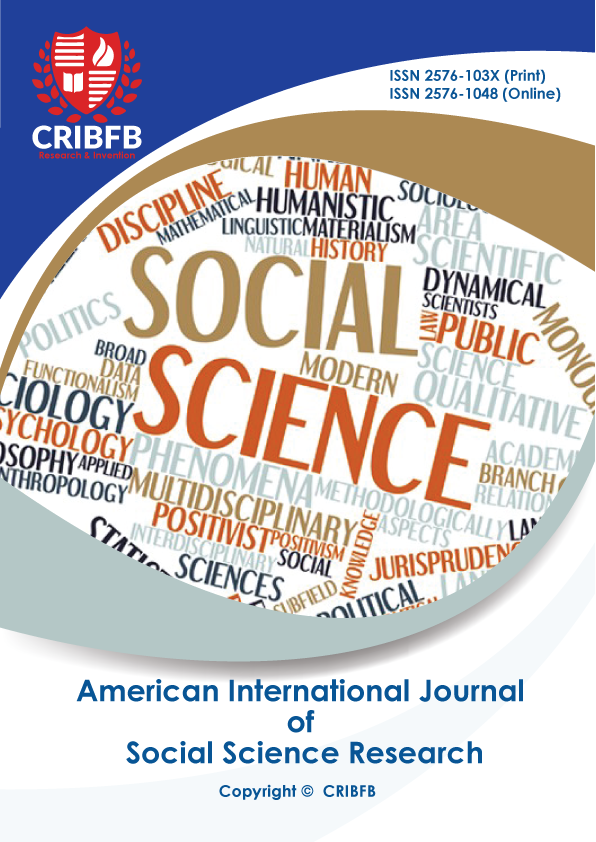INTERACTIVE APPROACHES IN THE ELT CLASSROOM: A CONCEPTUAL STUDY IN THE EDUCATIONAL INSTITUTES OF BANGLADESH
Main Article Content
Abstract
In an effort to foster a positive learning environment in traditional English Language Teaching (ELT) classrooms, language experts advocate for the implementation of an interactive approach to enhance the effectiveness of education for learners. The interactive classroom encompasses various elements, including active participation in the learning process, active engagement in the exchange of ideas, and active involvement in communication with teachers. From the perspective of authority, learners are motivated to express their views, practises, and patterns of behaviour. Linguistic challenges are encountered by learners, necessitating their engagement in discussions with peers and educators in order to surmount these intricacies. The process of interaction fosters the development of innovative learning, since learners are able to effectively address psychological hurdles by engaging with others. The objective of this study is to examine the application of an interactive method in the English Language Teaching (ELT) classroom and to analyse the prevailing scenario of interactive education in Bangladeshi educational institutions.
Downloads
Article Details
Issue
Section
How to Cite
References
Abedin, M. M. (2012). The present mode of teaching in the ELT classes at the Higher Secondary level in Bangladesh: Is it the practice of CLT or disguised GTM?. Stamford Journal of English, 7, 1-15. https://doi.org/10.3329/sje.v7i0.14459
Adhikari, B. R. (2011). Teaching speaking in the Nepalese context: Problems and ways of overcoming them. Journal of NELTA, 15(1–2), 1–9. https://doi.org/10.3126/nelta.v15i1-2.4602
Albulescu, I. (2008). Pragmatica predării: Activitatea profesorului între rutină și creativitate. Ed. Paralela 45. Pitești.
Barr, R. B., & Tagg, J. (1995). From Teaching to Learning--A New Paradigm for Undergraduate Education. Change, 27(6), 12-25. https://doi.org/10.1080/00091383.1995.10544672
Bonwell, C., & Eison, J. A. (1991). Creating excitement in the classroom. Washington, DC: George Washington University, School of Education and Human Development. Retrieved from https://www.oid.ucla.edu/.../active-learning-eric.pdf
Butler, J. A. (1992). Use of teaching methods within the lecture format. Medical teacher, 14(1), 11-25.
Cerghit, I. (2006). Metode de învățământ. Ed. Polirom. București.
Crawford, A., Saul, E. W., Mathews, S., & Makinster, J. (2005). Teaching and learning strategies for the thinking classroom. Retrieved from https://books.google.ro/books?isbn=1932716114
Chilwant, K. S. (2012). Comparison of two teaching methods, structured interactive lectures and conventional lectures. Biomedical Research, 23(3), 363-366.
Ebrahim, T. (2017). Participatory teaching-learning in Bangladesh. The Daily Sun: A Country Leading English Daily.
Giorgdze, M., & Dgebuadze, M. (2017). Interactive teaching methods: challenges and perspectives. International E-Journal of Advances in Education, 3(9), 544-548.
Hasan, Z. (2016). ELT in Bangladesh: New method required. The Independent: A Country Leading English Daily.
Lo, C., & Monge, A. N. (2013). Inclusive, Interactive Classroom as Student Learning Facilitator. International Journal for the Scholarship of Teaching and Learning, 7(2), 1-20. https://doi.org/10.20429/ijsotl.2013.070213
Mukhamedyarova, Z., & Cotter, M. S. (2005). Interactive Methods of Teaching as a Condition for Developing Students' Independent Learning Skills in Kazakhstan and the US. International Education, 34(2), 62-70. Retrieved from https://www.eric.ed.gov/ERICWebPortal/recordDet
Nasmith, L., & Steinert, Y. (2001). The evaluation of a workshop to promote interactive lecturing. Teaching and learning in Medicine, 13(1), 43-48. https://doi.org/10.1207/S15328015TLM1301_8
Oprea, C. L. (2009). Strategii didactice interactive. EDP. București.
Pajares, F. (1996). Self-efficacy beliefs in academic settings. Review of educational research, 66(4), 543-578.
Petruţa, G. P. (2013). Teacher's Opinion on the use of Interactive Methods/Techniques in Lessons. Procedia-Social and Behavioral Sciences, 76, 649-653.
Rahman, M. M., Islam, M. S., Karim, A., Chowdhury, T. A., Rahman, M. M., Seraj, P. M. I., & Singh, M. K. M. (2019). English language teaching in Bangladesh today: Issues, outcomes and implications. Language Testing in Asia, 9(1), 1-14. https://doi.org/10.1186/s40468-019-0085-8
Rahman, M. M., & Pandian, A. (2018). The chaotic English language policy and planning in Bangladesh: Areas of apprehension. Pertanika Journal of Social Sciences & Humanities, 26(2), 893–908.
Rahman, K. A., & Rahman, M. F. (2012). Change initiatives in English in action intervened primary schools in Bangladesh. Mevlana International Journal of Education (MIJE), 2(1), 15-24.
Rao, S. P., & DiCarlo, S. E. (2001). Active learning of respiratory physiology improves performance on respiratory physiology examinations. Advances in physiology education, 25(2), 55-61. https://doi.org/10.1152/advances.2001.25.2.55
Ray, A., & Roy, S. (2017). Implementing a “New” Method of Teaching English in Bangladesh: Incorporating a Communicative Language Teaching (CLT) Model in a High School Classroom. In S. Baily et al. (Eds.), Experiments in Agency, 113–128. https://doi.org/10.1163/9789463009447_011
Sánchez, M. M. M., Morfín, A. P., & Campos, V. E. P. (2007). Interactive games in the teaching-learning process of a foreing language. Teoría y praxis, (4), 47-66.
Silverthorn, D. U. (2006). Teaching and learning in the interactive classroom. Advances in Physiology Education, 30(4), 135-140. https://doi.org/10.1152/advan.00087.2006
Vygotsky, L. (1978). Interaction between learning and development. In M. Cole, V. John-Steiner, S. Scribner & E. Souberman (Eds.), Mind in society: The development of higher psychological processes (pp. 79-91). Cambridge, MA: Harvard University Press.
Yakovleva, N. O., & Yakovlev, E. V. (2014). Interactive teaching methods in contemporary higher education. Pacific Science Review, 16(2), 75-80. https://doi.org/10.1016/j.pscr.2014.08.016
Yee, K. (2019). Interactive Techniques.




